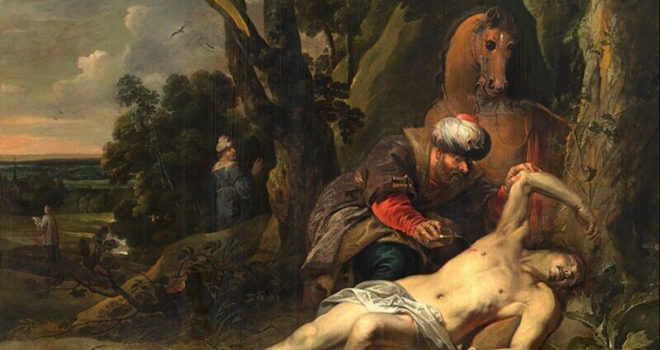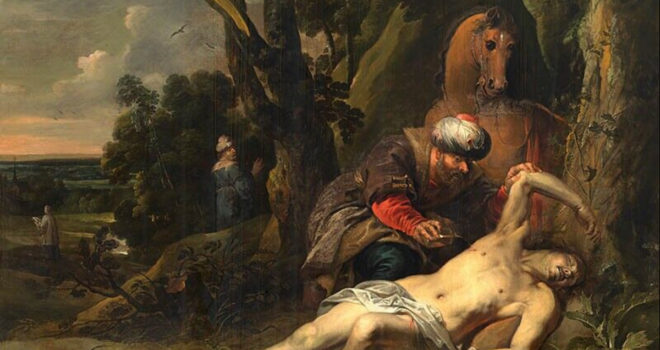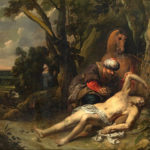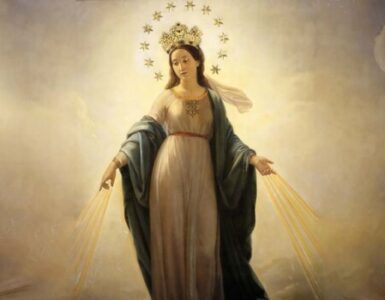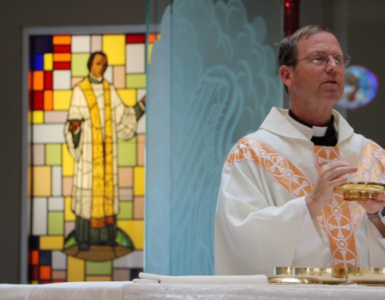Viewing and pondering sacred art offers the faithful a great way to meditate more deeply on the life and ministry of Jesus Christ. This series of articles will highlight several pieces of art related to the Luminous Mysteries of the Rosary, which highlight Our Lord’s public ministry. Each of these pieces of art allows us to reflect on Jesus’ teachings and miracles, connecting them more fully to our own lives.
The Third Luminous Mystery of the Rosary, the Proclamation of the Kingdom of God, allows us to reflect on the ways that Jesus “went about all Galilee, teaching…and preaching the gospel of the Kingdom and healing every disease and every infirmity among the people” (Mt. 4:23). After the Sermon on the Mount, which was the summation of his teaching about the moral and spiritual life, the Lord continued to give instruction on how to live through the parables. Of the many parables Jesus employed to teach about the various layers and dynamics of the Kingdom of God, one of the most memorable and recognizable is the Parable of the Good Samaritan.
Balthasar van Cortbemde, a Flemish art dealer from Antwerp, visualized this parable when he painted The Good Samaritan in 1647. The painting, which is the only work attributed to the artist during his career, draws viewers into the biblical scene and offers them a memorable opportunity to ponder the position and movements of its various characters. In these moments of reflection, viewers have the opportunity to reflect on ways that Jesus exercised His ministry of mercy; and ways that they can participate in and extend that ministry.
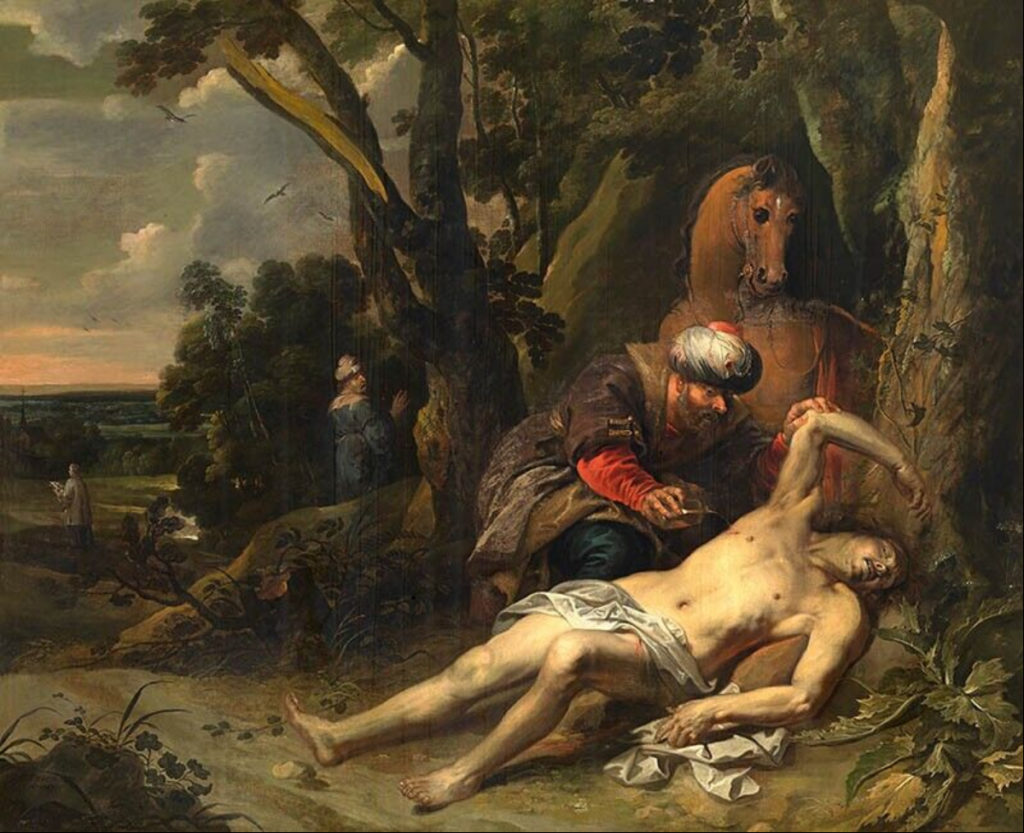
We read in Luke’s Gospel, “A man was going down from Jerusalem to Jericho, and he fell among robbers, who stripped him and beat him and departed, leaving him half dead” (Lk. 10:30 ESV). We see this man in the foreground of the painting, covered in nothing but a dusty shred of white cloth. Upon looking at this beaten man, a viewer might even make an association with Jesus taken down from the Cross. In any case, pondering this part of the image allows the viewer to ask probing questions: What have been the patterns in my life that have left me stripped, beaten, and half-dead? Are there people who have taken advantage of me in those ways? Have I ever acted as one of the robbers, abusing others and leaving them wounded?
A viewer notices quickly that the beaten man has a wound on the right side of his torso, near his heart. This certainly could be symbolic of the way that sin, committed by ourselves and others, inflicts deep wounds on our bodies, minds, and spirits. This is precisely what sin does to us, whether our own sins or others’. So, we come to ask: How have I been wounded and by whom?
Kneeling over the wounded man is the so-called “Good Samaritan.” His position gives the indication that “he had compassion” (Lk. 10:33). He is depicted in attire from the middle and far east. This is probably meant to show the difference in culture between these two men, the difference that normally would have kept the man from lending his aid. In my own life, am I willing to receive help and healing from someone unexpected, even outside of social norms?
The Samaritan pours an elixir from a balm jar into the beaten man’s wound. The biblical passage tells us that he “bound up his wounds, pouring on oil and wine” (Lk. 10:34). Throughout salvation history, oil has always been a symbol of healing as well as a mark of ownership; and wine has always been a symbol of abundant joy. This can help develop in viewers a deeper devotion to the sacraments, especially Anointing of the Sick, Confirmation, and the Eucharist, in which the Lord marks us, sustains us, and brings us new joy.
It seems that the inn to which the Samaritan would transport the man is at the left-hand edge of the scene. We notice, though, that it is depicted with a Cross atop a steeple, as a parish church. From the time of the Church fathers, the inn in the parable has been symbolic of the Church, in her structure and ministry. Like the Samaritan, do we have trust and confidence in the innkeepers (especially the clergy) to provide effective and sustained ministry, especially spiritual healing, especially in these recent years of scandal and secularization?
In between these two parts of the scene, we notice two other figures. The first is the priest who has passed by some time ago. We notice that he is occupied with a book, perhaps a breviary, as he walks. The other figure is the Levite who looks back over his shoulder at the Samaritan and the injured man. We know from the biblical parable that he chose to pass by the man in need, but the artist shows that he is interested in the outcome. These figures cause us to ask ourselves if there have been times, perhaps many, that we have ignored or avoided some distressed person for what seemed like a legitimate reason. Perhaps later we have looked realized in hindsight that we should have done more. In any case, this parable and this painting offer each of us an opportunity to reflect on ways that we can extend more or Jesus’ mercy to those around us. The Lord’s timing tells us that it is never too late.
The last detail that may be worthy of some reflection is the tree under which the Samaritan anoints the wounded man. This tree has a branch that is severely broken, and part of it lies on the ground. Perhaps the artist sought to make a visual commentary about the fracturing of Europe that had taken place over the preceding century due to the wars of religion on the continent. Even in our own day, when wars are largely of a different origin and kind, we can still reflect on the ways that such events have rent the human community. This leads us to ask if there is any way that we can foster healing. Perhaps we do so by bringing the mercy of Jesus to someone in need, regardless of the ethnic, religious, or social boundaries that we have seen before.
Reading this parable and gazing at this painting allow us to gain a fuller understanding of the ways that the Sermon on the Mount is to be implemented. The parable and the painting open up a window to see the extension of Jesus’ ministry of mercy. That ministry involves looking past social boundaries in solidarity. That ministry involves the Church and sacraments. That ministry beckons us to bring the works of mercy to a world that has so much brokenness and need due to sin.
✠
The Good Samaritan is in the public domain.


